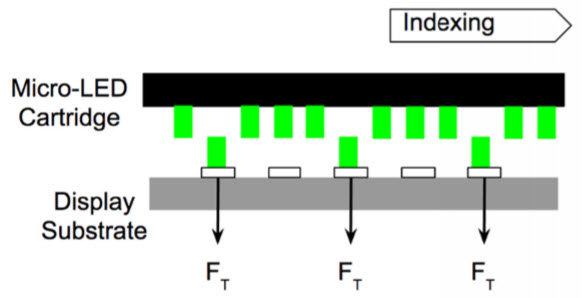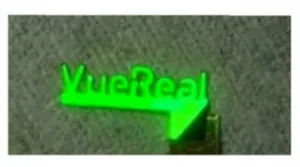We reported on VueReal of Canada when it announced that it was working on MicroLED and had developed a 6,000 ppi microLED display (VueReal Announces Super High Pixel Density Micro LED Display ). Now we have a bit more information. The company’s CEO and founder, Reza Chaji, worked on OLED for some time (we note that he is named on a number of patents from OLED compensation company, Ignis Innovations) but was concerned about the development of the technology and switched to looking at MicroLED. VueReal was started in 2016.
Key to the company’s technology is a claimed ability to make individual LEDs of less than 1µ without losing efficiency – a loss in efficiency usually accompanies a drop in LED size. Despite the small size, output is in the range 10,000 cd/m² to 100,000 cd/m². Because the chips are so close together and so small, the smaller they are, the less they cost.

The second step is that the LEDs are made using a printing method that means that the devices are made on a cartridge that is used to carry the LEDs. They are built on epitaxial These are then transferred to the final substrate using electrostatic forces. The company believes that its system will be much more reliable than pick and place, and can reduce the number of pixels that would need to be repaired. Further, the company believes that adding one spare LED for each three LEDs would mean that most defects would be compensated, without a repair process.
 VueReal’s transfer technology uses electrostatics
VueReal’s transfer technology uses electrostatics
Chaji has some experience in drive schemes and the company has its own drive scheme which can run the LEDs in the difficult area where the drive is very low. The company has recently added Yaser Azizi as VP of Circuit and System Design. Azizi was for 10 years with Ignis.
The company plans to initially work on microdisplays for AR and VR applications, but later plans to get into larger display applications, from smartphones upwards. Chaji has pointed out that the very small space occupied by the microLEDs leaves space for other functions on the substrate – perhaps in the same kind of approach that we have seen from the Fraunhofer, which has integrated photodiodes. (Fraunhofer to Show Bidirectional Microdisplays)
Analyst Comment
It’s worth a look at some of Chaji’s patents which includes one on the transfer process. (BR)

